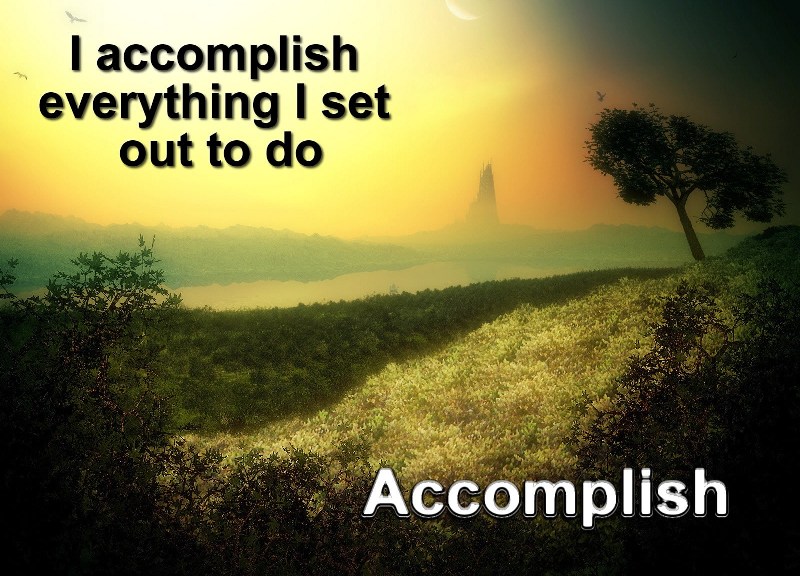
Even though this section of this course is the first in the series, I actually created it after I had finished the other sections.
As you will find out in this course, almost all of the content is based on my actual life experiences, and not on something I read in some book or article. In this way, I can know that I am giving you 100% true information.
So why did I create this section? Because I have found out over and over again that many people are just not motivated to make changes in their lives.
Let me give you an example.
There are two guys at the gym I go to who are taking drugs that are PPI’s (Proton Pump Inhibitors), basically Prilosec or variations thereof. I explained to both of them that a statistical analysis of 73,679 individuals older than 75 showed a 44% increased risk of dementia in those who regularly used proton pump inhibitors (PPI), compared to those who did not take PPIs.
I also told them that in another study, the people who took PPIs faced a 21% increase in risk of ischemic stroke, compared with nonusers. And those who took more than 40 mg a day of the PPI omeprazole (Prilosec) were associated with a 40% increased risk of stroke.
And yet, when I explained this to them, it was like they had turned off their minds. One said things like “I like my spicy foods”. The other fellow said that his doctor suggested Prilosec to prevent esophageal cancer, as he had reflux issues. This is obviously a good point.
But when I suggested that they try things like cutting our spicy foods, eating smaller portions, or not eating late at night they were uninterested. They weren’t motivated enough to try to make the change. So it was a waste of my time and research to talk with them.
I could give you many other examples of people who I have spoken with who had problems with their physical or emotional health, and to whom I offered remedies, only to have them rejected.
I thus finally came to the recent conclusion that no matter how great the information in this course is, unless you are motivated to make the effort to change, it’s all of no value.

I can tell you that the most important way to be motivated is to have a solid reason to want to do something. If your reason for doing your bodyweight exercise session is “It’s good for me”, you might not make it some days, or you might just quit.
But if your reason is “I want to be in shape so that I can play with the grandkids”, and you have their photo in the area you work out in, then you are a lot more likely to follow through.
In the end, the determining factor for whether you do something or not is the strength of the reason for doing it. For example, if I made you an offer to give you $100 per workout to do an easy 15-minute cardio workout 3 days a week, would you do it? Unless you’re really well-off, likely you would. Even if you were waelthy, would you do it for $1,000 per workout? $10,000?
The point is, which I don’t believe you can deny, is that if the reason is good enough, you will do the action required. I have read many stories about women who have gone to extreme lengths to be able to fit into “that gown” on their wedding day. And guys who have done epic workouts 5 days a week or more, just so they’d have a great body in time for the summer beach season.
There’s a saying I heard a while back that is “If you really want to do something, you’ll find a way to do it. And if you don’t want to do it, you’ll find an excuse”.
So when it’s time for you to do something beneficial for yourself, search for the best reason. In some cases, it might be your health, but you may still have to refine that be being more specific, such as “ I want to lose weight so I will not have to buy plus-size dresses anymore” or “I want to get fit so I can go swimming or hiking with my friends and keep up with them”. It could be because someone close to you recently died, and you’re scared you’ll be next.
I have helped you there whenever possible by including reasons in this course. For example, in the fitness section, I’ll tell you about “10 of the Best Reasons to Exercise”, and the results of a study that showed people were “46% less likely to die” if they exercised regularly. In the good nutrition section, there’s a list of 26 reasons sugar is bad for you.
But in the end, you will have to find your special reason to exercise, eat right, or do other things that will make your life better. My real hope for you, however, is that you will be inspired and motivated to make your whole life better, and not just to exercise or eat right.
On my Website at GreatMiddleAge.com, I regularly put up new articles on easier ways to get fit and lose weight, so be sure to go there from time to time and check them out. Of course, if you sign up for my newsletter, you’ll get lots of great info delivered to your inbox regularly. Click on this link now to get connected: https://greatmiddleage.com/newsletter/. Or you can always just click on the “Newsletter” link on GreatMiddleAge.com.
Following is some great information on the topic of motivation. What I just told you really covers what motivation is about, but I want to present some other insights and methods of finding motivation. Some of the following material is about goals. I have a separate section in this book on achieving goals, so there may be some overlap, but it’s hard to really get into motivation without also dealing with goals. I suggest that you explore both this section, and also the Achieving Goals section of this book.

My real hope for you, however, is that you will be inspired and motivated to make your whole life better, and not just to exercise or eat right. The main graphic for this book shows the sentence “Make the rest of your life the best of your life”. That’s what I hope you’ll do, utilizing the 13-step process I have developed.
Below is some great information on the topic of motivation. I believe the above information really covers what motivation is about, but I want to present some other insights and methods of finding motivation. Some of the following material is about goals. I have a separate section on achieving goals, so there may be some overlap, but it’s hard to really get into motivation without also dealing with goals. I suggest that you explore both this section, and also the Achieving Goals section of this course.
What motivates me?
One questions you may be wanting to ask at this time is what motivates me. for me ot be 74 and loving to exercise and eat right does require motivation.
My answer to that is really very simple. I love to make myself happier and healthier. At some level, this seems so obvious I can’t see why other people are similarly motivated. What other goal could have more value in your life? More money? Bigger house? New relationship? All of these things are nice, but in the end, their purpose is to make you happier.
One of the things I love about being alive at this point in time is the Internet, especially YouTube. I have to tell you, I’m like a kid in a candy store when I go to YouTube. There are so many incredible things to be learned there. Healthier ways to eat. New foods to try. New exercises to try. More effective ways to do things that I’m already doing. It’s incredible!
Second thing that really motivates me is helping other people to be happy. I can’t exactly tell you why, but it’s sort of like if you ever knew somebody who just discovered something great like a new diet that really works, or even some great restaurant. In a way, it’s a natural thing to want to share something that we feel is really great.
It’s the same with me, except I have so much to share that I already know, plus all the new things I continue to learn. This book that you’re reading (or listening to) has more than 100,000 words that I want to share with you.
Even on a personal basis, if I meet somebody that has some negative situation that I have a cure for, I’m really motivated to share that with them. The only problem is, however, that my experience is although these people are suffering, they aren’t that motivated to hear advice, or at least my advice. For that reason, I have really cut down on handing out free advice.
But you’re different. You’re reading this book or listening to this audio because your motivated to improve your life. I really hope that you won’t just read the book and then put it aside with the thought “I’ll have to look into that someday”. Don’t let that happen. Take action now!

What exactly is motivation? It is a rather slippery term that seems to have a different definition depending upon who you ask, but if you look at psychology, it is pared down to the simple definition of: the force that drives us to act; that means any type of action, including getting a glass of water or eating food.
If we had no motivation whatsoever, we would simply die of thirst or malnutrition because we had no driving force to get food and water. Of course, in those cases, the body has certain defenses against starving or dying of dehydration, but the point is that motivation drives everything.
Psychology describes it as the biological, social, cognitive or emotional force that makes us do something. Commonly, people talk about motivation as a compeller to make changes, and that’s basically the definition that we’re going to use in this section. The force that drives us to make changes and do big things is motivation and if you can control your motivation, you can control your destiny.
What is Motivation Made of?
Understanding motivation is the best way to conquer it and that’s why we’re going to break motivation down further into three parts. If you want to achieve a goal, you know that simply having the desire isn’t enough. In fact, achieving your goals require that you maintain your motivation throughout the obstacles that you will undoubtedly encounter. Here are the three separate components of motivation:
The Activation of Motivation
The activation of motivation is when you have the desire to achieve something and you take action. For example, if you wanted to lose twenty pounds, you might create a diet or exercise plan over the next few weeks. You are motivated because you have the desire to achieve your goal, and you actually take a step in that direction. This could be anything. In the case of our example, your activation doesn’t have to be making a diet or exercise plan. It could be throwing all of the junk food in your cupboards away, or it could be as simple as stepping on a scale and finding out what you weigh so that you can know when you’ve reached that 20-pound goal. Any step you take in the direction of your goal once you have made it is the activation of motivation.

Motivation Requires Persistence
This is the part where people usually fail at achieving whatever it is that they set out to do. When you first get motivated, you are excited and can’t wait to start on the steps required. Then, you start doing those steps and you either get distracted by other things in life, or you find that they are too hard, that there are too many obstacles in the way. These obstacles will exist no matter what goal you are trying to achieve, and it is the point when motivation needs to be strengthened by some of the techniques that I’’ll cover in this section.
Intensity of Motivation
The third component is intensity and it is best described as the amount of effort that you put into achieving your goal. Although two people can have the exact same motivation to achieve a goal and even have the persistence to make it through obstacles, the intensity is what determines how quickly they will be able to achieve the goal.
Some people are plodders, strong and steady, working towards a goal a little bit each day. Some are sprinters, moving through the steps of achieving a goal as fast as the goal will allow. Neither one of these is wrong, nor is the middle point, which I like to call the jogger. The jogger is what you should strive for. Neither is he racing through the goal so fast he is in danger of burning out or moving so slowly that it could take months or years to achieve a goal that could be achieved within weeks.
The Source of Motivation
There are a couple more things that you should know about motivation. The first is that it can be intrinsic or extrinsic. In other words, it can come from inside of us or it can come from outside desires. Intrinsic motivation means that you do it simply for the personal pleasure. An example might be cooking with a difficult recipe just for the challenge or completing a crossword. The main factor here is that you do it not for outside recognition, but internal pleasure. Extrinsic is just the opposite. Extrinsic motivation comes from the outside rewards that you’ll get: recognition, fame, money or respect just to name a few.
The second thing that you should know about motivation is that there are three sources where your motivations come from. Psychologists have debated this issue for quite a while, but over the years, these have become the accepted standard sources of motivation.
Needs: Motivation coming from your needs or drives is one of the theories of motivational sources. Some of these are quite obviously true: eating, drinking and sleeping for example.
Instincts: Instincts are another source of motivation according to psychologists like William James and Sigmund Freud. Our brains come with prewired behavior patterns already included that activate when certain external stimuli happens.
Arousal: This is an explanation of the type of motivation that people experience. A person with low levels of arousal might not be found skydiving or parachuting out of airplanes, but a person with high arousal levels might do exactly this.
Now that you know more about motivation and some of the factors driving it, we can move onto some of the techniques to help you control it better.

Some people just aren’t motivated or just aren’t motivated enough. This is difficult to understand for people that always have motivation and they slap labels on these people like “lazy,” “stupid” or “uncaring.” But there are things that can cause low levels of motivation that have nothing to do with the person’s intelligence or laziness. Most of the time, low levels of motivation can be cured if the right techniques are applied. We know that practice makes perfect, or at least in this case, practicing being motivated will help you be more motivated in the future.
The factors that cause low levels of motivation can be divided up into four categories: habitual beliefs, habitual behaviors, personality quirks and health problems. We’ll discuss each of them in detail, but don’t be alarmed if you feel as if you fall into more than one. Most people do and those people still become motivated and achieve their goals. Let’s get started.
Habitual Beliefs That Affect Motivation Levels
A habitual belief is something that you have believed for so long that it seems inconceivable that it could be false. You might have heard that people say something for so long that they start believing it themselves. That’s how strong these habitual beliefs can be, and they can be a major pain to change.
But if you want to increase your motivation levels, you are going to have to carefully examine some beliefs and see if they are causing your lack of motivation. If that is the case, then carefully evaluate them so that you can know whether they are actually true, or whether you have just held them for so long that you believe they are.
Let’s take an example belief so that you can see how the process works. Suppose that an overweight person has these two beliefs: “I am ugly” and “I’ll always be ugly no matter how much weight I lose.” How motivated is that person going to be to lose weight? Why would they give up food – which at times seems like the only friend in the world that they have – for something that that they believe isn’t going to change how they look anyway.
That’s why habitual beliefs can be such driving forces in stopping motivation. But they aren’t always true. In fact, they aren’t even logical in many cases. In the case of the example above, it is quite obvious that losing weight would make nearly every overweight person look better and be healthier, but the belief doesn’t take into consideration those factors. It just stops the motivation in its tracks and turns you towards that piece of German chocolate cake in the refrigerator.
Breaking the Chains of Habitual Behaviors
Habitual behaviors are different than habitual beliefs in that they are not based on any particular belief and don’t really have a foundation, but you have been doing them for so long that it can be almost impossible to break the habit.
I knew a middle-aged man who began to have serious teeth problems when he turned forty. In fact, growing up, his mother and father not only failed to stress how important brushing and flossing was, they actually didn’t believe in modern dentistry. Once he became an adult and realized how important brushing was, he was motivated to brush his teeth and floss every day.
However, even though he had strong motivation he found himself hardly ever brushing. He had been not brushing his teeth for so many years that he had to take special care and actually set an alarm twice a day for brushing, for an entire month, before he finally was able to make it a habit.
Habitual behaviors make us a slave to them just as much as habitual beliefs and sometimes we have to take drastic steps to break the habit and form a new one that will help us achieve a goal. For example, if your goal is weight loss, but you have never developed the habit of exercise (or to put it more accurately you are a slave to the habit of not exercising) you will find it extremely difficult to do the first few times you do it and you might have to force yourself to exercise for quite a long time before the habit of non-exercise is broken.

Personality Quirks
Another source of low motivation comes in the form of personality quirks. These are things about you personally that aren’t habits or beliefs and can’t really be changed (although they can sometimes be improved) that affect your motivation in various ways. A really great example of this is the person who suffers from a poor memory. This can make it difficult to get motivated because they cannot remember why they started the steps to achieve the goal in the first place. In other words, they have forgotten the goal.
Health Problems
The last source of low motivation is because of health problems, either psychological or physiological. There are actually a number of problems that can cause low motivation and often, people go through their entire lives undiagnosed and are never able to achieve their goals or do the things that they wanted to do because of this particular problem. Let’s go through them one by one so that you can eliminate these as a possible cause of your low motivation.
Depression: Depression is by far and wide the most common problem of low motivation when it comes to psychological problems. Depression can make people want to stay in bed all day and no matter how much they might want to achieve their goals, they are unable to because of the disease. Usually, once someone is actually diagnosed with depression, getting them on the right anti-depressants is a huge step towards helping them achieve their goals. However, bear in mind that even if a person is diagnosed with depression and benefits greatly from getting on the right medication, they still have a whole lot of habits that they’re going to have to break to get them to where they can achieve all of their goals.
Low Blood Sugar: People that have low blood sugar can have physiological reactions that make motivation difficult. A diet that consists almost entirely of carbohydrates can cause a lack of motivation because the blood sugar spikes and then crashes, and if this happens for a long time, the brain actually changes and fatigue sets in. Warnings signs are: people who don’t eat breakfast and people who drink a whole lot of coffee or lots of energy drinks.
Brain Inflammation: When you have brain inflammation or “brain fog” your neurons are firing slower than normal. There are all kinds of things that can cause this: autoimmune diseases that target the brain, chronic inflammation and sensitivity to food.
Hypothyroidism: This is one of the aforementioned autoimmune diseases where the thyroid gland is being destroyed by the immune system. If you lose your thyroid gland you are going to experience a number of symptoms like chronic fatigue, depression, being unmotivated and even weight gain.
Sensitivity to Gluten: Not being able to tolerate gluten is a common problem these days and many foods are going gluten free because of it. Some of the symptoms of having a gluten intolerance, and ingesting gluten anyway include depression and fatigue that can make it difficult to get up and do anything.
On my Website at GreatMiddleAge.com, I regularly put up new articles on easier ways to get fit and lose weight, so be sure to go there from time to time and check them out. Of course, if you sign up for my newsletter, you’ll get lots of great info delivered to your inbox regularly. Click on this link now to get connected: https://greatmiddleage.com/newsletter/. Or you can always just click on the “Newsletter” link on GreatMiddleAge.com.

If you want to become motivated you are going to have to find a source of motivation from which to draw from. Think of this motivation source like a bucket of water. Whenever you need a boost, you can dip your cup into this bucket and come up with some extra motivation. But that means that whatever is in the bucket is going to have to be some powerful stuff.
Earlier, I talked about the three sources of motivation and how these sources can fuel your motivation. But the problem with these sources is that they are already present. For example: you have a need to sleep at night, so you probably are motivated to work hard at your job and keep getting a paycheck so you can eat and pay your rent. If you have an arousal need that promotes sexual desire, you might be more motivated to lose weight or get in shape.
Since these sources of motivation are already present, whether you want them or not, using them as your source is obviously not going to be effective, otherwise you would have already achieved your goals. So, we have to find a new source of motivation that you can draw from.
The next section will give you some tips for staying motivated, like posting a picture of something you’re working for on your wall, but this isn’t what we’re talking about here. This is a deeper sort of thing, something that helps you get the motivation in the first place and get started. The way to best do this is by knowing yourself and what you want. Here are some exercises to help you.
Meditation: Many people laugh at the idea of meditation as a way to know yourself, but let’s put all of your preconceived notions aside. At its core, meditation is simply a period of time in which you are very still and very quiet. To ask the deeper questions about what you want in life requires quiet, because otherwise you aren’t going to hear the answers. Try it and look deep into yourself and find out what you want, way down deep at the core.
Write a Biography: Suppose that you were going to die tomorrow and you had 1000 words to tell the world who you were and what you had wanted out of life. Take your time and really think about it. Sometimes, the act of writing about ourselves as if we were biographing someone else is not only cathartic, it can open us up to truths that we weren’t aware of before – at least consciously.
What’s Unique? Decide what it is that is unique about you. This might help you see what it is you truly and deeply want. One of the side effects of discovering what is unique about us is that we can see what we can offer the world and what the world can give us in return.
Love List: Make a list of the things in life that you absolutely love. Things that make you excited and happy, that get you feeling like you are truly alive. It doesn’t matter what those things are. You have the freedom to write whatever you want including cooking, playing sports, teaching, learning, whatever. Hidden in this love list, you will find some deeper truths about what you want out of life.
Be A Billionaire: Consider this: what would you do if you had a billion dollars in the bank? You would never have to worry about working again, and your bills would all be paid, plus you would have enough money to do whatever you wanted to, finance whatever you wanted, from starting a business of some kind to making a big budget movie. So, what would you do, where would you go and what would you care about if you had a billion dollars?
Your Admiration: Who are the five people in the world you most admire? Write them down on a list and then decide what qualities each one of them have that makes you admire them so much. Then, look at those qualities as if they were something that you yourself were working towards (and perhaps they are). These qualities may give you some great clues as to what you want out of life, deep down.
You’re Limitless: Imagine that you had no limits whatsoever on your life. Whatever those limits are, remove them. If you have always wanted to be a rock-and-roll singer, but you have no vocal talent, remove that limitation! If you have always wanted to run marathons but you are stuck in a wheelchair, remove that limitation too. Now, once you have removed your limits and written down what it is you truly want, can you tell where your deep down motivation comes from?
Being Judgment Free: If you knew that absolutely no one would judge you, what would you stand for? What causes would you announce to the world that you believe in? Remember, no one will judge you, no matter what it is that you stand up for. Write down a list of several things that you absolutely believe in and would be vocal about if you weren’t fearful of being judged.
My Accomplishments: Make a list of your greatest accomplishments. In the things that you have already done, you can find motivation for doing more things in the future. Write down everything that was a particular challenge for you to achieve, not necessarily something that is usually difficult for everyone. Anytime you have succeeded, particularly against all odds, put it on paper. Then evaluate and see if you can see deeper meaning and motivation from those accomplishments.

So far, you have learned what motivation is and where it comes from, and you have learned what sort of things can deplete motivation and where to look for a never-ending source of power to strengthen your motivation. But what about actual tactics to combat laziness, forgetfulness or whatever the problem is that is causing your lack of motivation?
It is likely that you will be familiar with some of these tactics already. Most people that have made goals and failed at achieving them are familiar with the theory behind increasing motivation, even if they haven’t actually tried any of the exercises listed here.
Your first step is to write down what it is you want. If you don’t set an achievable, measurable goal, then all of the motivation in the world isn’t going to help you. Think of motivation like the gasoline you put in your car. You can fill your car up with gas, you can even run the engine and idle in your driveway, or make all your neighbors mad by revving the engine. But without a destination, you’re not going anywhere. It is only when your car is full of gas, you have a destination in mind and you have a roadmap to get there that exciting things begin to happen.
So, let’s go over some exercises to help you remind yourself of why you are putting in all of this hard work.
Exercise #1: The Photo
Suppose that you want to lose weight. You see yourself in the mirror every day; you get on the scale once a week and you go grocery shopping a few times a month. Obviously, you know that a problem exists, but knowing about the problem doesn’t give you any excitement about doing what it takes to change it. Being able to look at the solution does.
Post a picture of yourself, or a picture of someone you want to look like if necessary, on you wall, refrigerator or door. Make it as big of a photograph as you possibly can and when you look at the photo every day, you will be motivated to make the changes. Even when you are feeling down, walking past this photo might be enough to get you excited again.
This doesn’t just work for weight loss either. If you want to be rich, post pictures of yacht, airplane, sports car or whatever else you want. If you want to be famous, Photoshop a picture of yourself on a movie poster and hang it up.
Exercise #2: The Vlog
Starting a vlog (video log) can be a great way to stay motivated. You can either keep a vlog for yourself, or you can post it online. This method has three advantages over some of the other methods here, particularly if you post online, but it also has a downside.
Advantages of Vlogging
There are some serious advantages to going the vlog route.
First, you’ll have a record of all of your past accomplishments on video and you can go back and look at them anytime. Again, with the weight loss example, suppose that you have lost 50 pounds and you suddenly find yourself unmotivated to do any more. You could go back and look at all of the progress that you have made so far and you might just get that motivation going again.
Another advantage to vlogging is that you are accountable to someone. In fact, if you publish on YouTube and you get a following, you will be accountable to a whole bunch of people. You can create vlogs detailing your progress and you will have more motivation to keep going because you know that you will be letting down your viewers if you mess up.
There is one more thing to consider when deciding whether or not to use this method. You will have a support network already in place and your viewer comments and video responses may help keep you motivated when you need it the most.
Disadvantages of Vlogging
This is a great way to keep your motivation strong, but as mentioned, it does have a downside. If you do mess up, you are going to be embarrassed about it and you are going to have to face all of those people. If it is a small error, this might not be such a big deal, but if it is a major screw-up, you are going to have to explain yourself to your viewers.
Exercise #3: The Reminder Method
You could also do the reminder method, which is simply a way of keeping motivated about a project or goal by writing about it whenever you feel discouraged, or writing about it when you first make the goal so that you can read back and see what it is you wanted and why you are trying so hard to achieve it.
There are two methods to doing this, and either one is pretty effective. The first method is to keep a journal.
Many people are already used to keeping a journal, so this method might work for them better because they will remember to read and update their journal. Keeping a journal is a good idea anyway, because you can write down your thoughts, impressions and feelings and when you make it through a particularly hard obstacle on your way to achieving your goal you can read the journal to get some motivation.
The other method is to start an online blog. This one also has an advantage – the same advantage that video blogging has – that you’ll be accountable to people if you use a blog to journal and you get some followers. If this sounds appealing to you, all you need to do is sign up with one of the free blogging services or start your own website and install WordPress or some other content management system.
Exercise #4: Posting Results
There is nothing like a list of your past achievements so far to keep you motivated and this particular method is effective because you are going to post your results somewhere visible. A whiteboard in your bedroom is perfect, but you can also print out your results on paper and post them somewhere you’ll see them.
You can also use your refrigerator, the wall above your toilet, or even the ceiling if you can see them when you look up. No matter what your goal is you will be reaching little milestones on the way to it, and every time you reach one of those milestones you have created a track record that will keep you motivated from now on.
How you decide to post your results is up to you. If you are doing weightloss as a goal, you can create a chart where you write down your weight every week. If you are trying to become independently wealthy, you can write down milestones on the method that you are using to achieve that independence. No matter what your goal is, there is a way to post and track it somewhere on a wall where you are going to see it every day.
Exercise #5: Create a Routine
Creating a routine is also one of the best ways to keep you motivated on your journey, because the habits that you build will keep you going even when you don’t feel like it. Habits are hard to break as we found earlier in the example of the man who didn’t learn to brush his teeth. But the hard part is when you first begin, because it does take some discipline to build a routine in the first place.
If you want to build a routine, it starts with setting daily goals. Figure out what you are going to do daily (in general, not specifically) and then make a time for you to do it. If you need to, make a schedule so that you’ll know where it fits in, or simply add it to your to-do list. It takes approximately four weeks to develop a habit, so you’ll need to be strong during those four weeks. After that, you will have a much easier time staying motivated because you’ll be in the habit of working towards your goal.

In this section, I’m going to talk about how you can channel your motivation most effectively. You could have an amazing amount of motivation, be able to overcome the obstacles that you’ll face with ease and still not reach your goals, because you are channeling your motivation into actions that will never get you anywhere.
It’s like the previous example that I used with the car. Channeling your motivation into something that isn’t going to help you is like revving the engine on your car. You aren’t going to move unless you put it in gear, no matter how hard you press that accelerator, and you know what happens eventually? You run out of gas the same way that you run out of motivation if you aren’t achieving results.
So, how do you know where to channel your motivation? Weightloss has kind of been a theme throughout this section so let’s continue with the weightloss example. Here are some ways that people spin their wheels and rev their engines when they’re trying to lose weight, and odds are, you’ve probably tried at least one of these yourself.
The problem that many people have is that they have no idea how to direct their motivation into something good. Often, people that are motivated work towards something that has no chance of getting them to their goal, or at least, will make it take longer for them achieve their goal, but they continue working at it because they don’t know how to direct their energy elsewhere.
Take for example, someone who wants to start a Web-design business. They are good at creating Websites so they make several of them to show to potential clients. After a few weeks, they have a dozen or so sites created, all on their own portfolio page and are ready to start getting business.
Since they don’t know exactly how to get business, they spend their time creating more sample Websites. This is a perfect example of someone who is motivated but they spend their time and energy doing things that won’t further their success.
The person in this example needs to do some research on how to cold call businesses and sell them on a Website, or how to market himself online and get in front of people and get seen. It is likely that if he continues to make sample sites, graphics and whatever else, he is eventually going to get frustrated and give up.
Another example is a person that wants to write a novel. They aren’t sure what the plot of their novel is going to be, so they start by creating the world that their characters live in. They create this marvelous fantasy world, with its own maps, continents and bodies of water, its own system of government, rules of magic and much more, and at the end they might have created an amazing world, but really what they needed was a basic sketch of a fantasy land.
The bottom line here is that you need to have a plan for how you are going to achieve it. The plan is like your roadmap in the car example. You might have a destination and a car with gas in it, but unless you follow a roadmap, your chances of getting lost along the way are quite high.
Making a roadmap is different depending upon what kind of goal you are going after, but if you want to sustain long-term motivation, find a way to channel it into something that is actually going to bring you success in your endeavors. Here are some tips to help you do just that.
A great way to do goal planning is to follow a method that the United States military coined: It is called backwards planning and it is one of the most effective ways to plan out your goal-achieving strategy.
You need to clearly define your goal. You can’t just say, “I want to lose weight” because that could mean anything, from losing a single pound to losing two hundred. You need to either specify the amount of weight that you want to lose or the amount that you want to weigh. Of course weightloss is just an example. The point is, you need to create a clear goal with an outcome that you can actual visualize and quantify, and put in a checklist.

Now, here is where the backwards planning comes in. Determine what the last thing you’ll need to do before you reach your goal. Here are some examples
Weight Loss: Determine the amount that you’ll weigh when yu reach your goal weight. You can clearly picture the end result – stepping on the scale and seeing the number that you have been working on for so many months – or years.
Publishing a Novel: The very last thing that you’ll do is approve the proofs that get sent to you. This will be what happens after all the writing, editing, rewriting and more editing.
Becoming Wealthy: Picture logging into your online banking and seeing a certain amount on your statement. The amount will vary, depending upon how much you think it requires to be independently wealthy, and you can either choose to visualize how much you have saved up, or how much you are getting per month. Either way, it still gives you that end result.
What is the last thing just before that last step? You can look at the examples there and determine which ones go with which step.
From there, the process is rinse and repeat. If you can see what you need to do to achieve your goal, and the step before that, and the step before that, before too long you will have an entire step-by-step plan on how to achieve your goal. But it all starts with that very first, last, step.

Some of your goals might be achieved within a few months and others will take years. Some life goals might even take decades.
Throughout all of that, you are going to have to persevere and keep going on your goal for long periods of time, and years may not seem like a long time now, but when you are trying to work towards a goal daily, the days, weeks and months stretch out there and seem interminable.
That’s why you are going to need a strategy to help you stay motivated over the long term, and the perfect way to do that is with bite-sized goals.
Before we get started on that, you should be aware of something. Many people set unrealistic goals when they are setting goals and trying to get motivated. That is going to be a huge problem for your motivation because you will know inside that you can’t achieve the goal, or at least, in the time allotted.
For example, if you are trying to lose a hundred pounds, setting a goal to achieve that in a month is absolutely unrealistic. No one can lose 25 pounds a week, no matter what kind of a diet they are on, and even if by some fluke, a person lost that much, there is no way it could be sustainable. Not to mention the fact that it would be extremely unhealthy.
This is also true of other goals that you might be considering. If you are trying to become independently wealthy, you should probably give yourself more than six months to get there, unless of course, you plan on using the lottery as your method for achieving that goal. Good luck with that.
If your goal is to be a pop star, you aren’t going to get there next week or even next year if your pitch is bad. You will have to practice and take lessons and many other things on the road to stardom.
Bite-sized Goals
In order to achieve your goals without losing motivation, you are going to need to break them up into bite-sized pieces. Have you heard the old adage; “How do you eat an elephant?” Well, the answer is “You don’t eat an elephant. Elephants are our friends”. A better metaphor is “How do you complete a 26-mile marathon?” And the answer is “One step at a time.”
That’s the whole point here. If you think about all the steps involved in getting you to your goal and how long it will take to arrive there, you will probably get pretty discouraged.
But when you break a goal down to one step at a time, you are able to basically just put one foot in front of the other without worrying too much about the destination. So, how is that done?
The first thing you need to do is have the plan from section five already completed. Since you know the major steps involved in achieving your goal, you can now break that step down into bite-sized segments. Let’s take the weightloss goal that we have been using throughout this entire section.
Let’s say that you have a weightloss goal segment to lose 25 pounds. That might take two months, three months or even longer. No matter what your period of time is, that’s your goal segment – your point from achieving one milestone to achieving the next.
Now, if you wanted to break this particular weight loss goal down, you could make it simple: Lose 2 pounds per week, for a total of 12-13 weeks to achieve this goal. However, you don’t have to do it weekly if you would prefer not to. Instead, you can simply break the goal down into five equal segments of five pounds.
This is basically how bite-sized goals work and whatever goal you are setting, you can always break it down further and give yourself a much smaller, more manageable and ultimately more achievable goal.

So, you have reached the end of this section with hopefully a greater understanding of how motivation works and how you can control it to achieve your goals and make your life better. In order to ensure that you know each step and can follow it successfully to each goal, let’s do a quick recap of each section and include the basics so that you have an easy reference guide whenever you need it.
Section One: In section one, you were introduced to the concept of motivation and learned a little more about how it works and how psychologists define it. There was a lot of information in that section about the psychology of motivation, but here are the key points that you should have learned from section one.
Motivation is defined basically as the force which drives you to do anything. The three components of motivation are activation, or the point in which you can the first action to achieve the goal, persistence which is how committed you are to the goal and intensity, which is how hard you are willing to work towards the goal. Motivation can be either intrinsic or extrinsic and there are three theories as to the source of motivation: needs/drives, instincts and arousal levels.
Section Two: The goal of section two was to get you to understand some of the things that cause low levels of motivation. Those causes were divided up into four different categories which are as follows:
Section Three: Section three describes some of the ways that you can find sources of motivation that will help you keep your motivation levels high against obstacles. Section three is all about getting to know yourself and finding out what your own personal sources of motivation are. Here are the ways that are suggested to find out that information.
Section Four: Section four outlines some of the tactics that you can use to increase your motivation even when you encounter obstacles.
Section Five: Section five is all about being able to direct your motivation into sources that are actually going to help you reach your goals. We discussed spinning your wheels and how people often direct their energy into actions that aren’t actually going to result in them reaching their goal. A suggestion to follow was the backwards planning method where you first determined what the very last step of your goal is to be, and then you figured out the step before that, and the step before that, so on and so forth.
Section Six: Section six talked about dividing your long-term and big goals into small, bite-sized goals to make them easier to achieve. Also, some good advice was given on making your goals to be realistic ones and not making them impossible to achieve.
Here’s a great infographic that just might help you out when you are lacking motivation and feel stuck. :o)

On my Website at GreatMiddleAge.com, I regularly put up new articles on easier ways to get fit and lose weight, so be sure to go there from time to time and check them out. Of course, if you sign up for my newsletter, you’ll get lots of great info delivered to your inbox regularly. Click on this link now to get connected: https://greatmiddleage.com/newsletter/. Or you can always just click on the “Newsletter” link on GreatMiddleAge.com.
Now that you have discovered how to motivate yourself. the next step is to get rid of your limiting beliefs, which are holding you back. Have you found a motivation for losing weight? Great, but if you believe that inner voice that says “You’ll always be fat, so why even try?”, then you’ll never succeed. So, please go to the next section of this course and learn how to unlimit your beliefs.